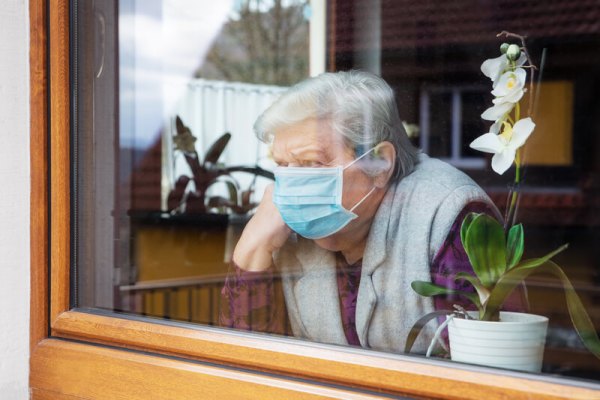As Switzerland moves towards easing Covid-19 social restrictions, some fear the virus will get away again.
A key part of containing the spread is testing. One way to evaluate how comprehensive testing is is to look at positivity, the percentage of tests that are positive.
Imagine the population were a jar of jelly beans, the testing a scoop, and the red jelly beans in the scoop positives. Positivity would be the percentage of red jelly beans in the scoop.
If there are relatively few red jelly beans (positives) in a scoop it suggests there might be fewer cases per capita in the wider population. It also suggests the testing net has been cast wider, fewer infections are off the radar, the number of recorded cases is closer to the actual number of infections, and the case fatality rate (CFR) is closer to the real fatality rate.
What does does Switzerland look like by this measure?
While Switzerland, with test positivity of 12% – 28k cases/228k tests, scores well when compared to others European nations, such as France (34%) – 158k cases/464k tests, and Belgium (25%) – 41k cases/167k tests, with far higher test positivity, it is well behind the world’s leaders.
Test positivity in South Korea (2%) – 11k cases/571k tests, Australia (2%) – 7k cases/439k tests, and Taiwan (1%) – 425 cases/55k tests – was far below Switzerland’s 12%. And, outcome-based CFRs in South Korea (3%), Taiwan (3%) and Australia (2%) were all well below Switzerland’s rate of 7% – by 21 April 2020, 7% of cases reaching an outcome (recovery or death – 20,878) in Switzerland had died (1,478).
Outcome-based CFRs in the nations with the lowest test positivity are more likely to reflect the true lethality of Covid-19, although they could also reflect a different demographic case spread. For example, in Australia, around 30% of cases were over 60. In Switzerland, 35% of cases were. The same figure was over 40% in France and over 50% in Belgium.
Switzerland’s higher positivity and outcome-based CFR suggest it is capturing only a fraction of its infections with its testing, understating its case number and leaving many cases off the radar.
Testing and identification of infections doesn’t matter too much when everyone is isolating and avoiding social contact. Those who are infected, but not sick enough to qualify for a test, don’t spread the disease beyond their immediate family. However, when restrictions are loosened, patchy testing, identification and isolation can turn into new infections as untested infected people start spreading the disease through the community again.
Covid-19 is slippery. It is possible to be contagious for a number of days before any symptoms appear. It is also possible to be a contagious carrier and never develop symptoms. This is why it is important to test mild and asymptomatic people that may have it, something Switzerland isn’t systematically doing.
Several studies suggest for every symptomatic patient there is at least one other with negligible or no symptoms. 52% of those testing positive on the Diamond Princess cruise ship were asymptomatic and 43% of those testing positive in the quarantined town of Vo in Italy were asymptomatic. A recent report from China suggests 59% with the disease could be asymptomatic. And, Zhang Wenhong, director of Huashan Hospital in Shanghai, estimates that between 18% and 31% per cent of infected patients are asymptomatic carriers, according to the South China Morning Post.
Identifying and isolating infections and social distancing are complementary. The more thoroughly and rapidly infections can be identified and isolated, the greater the scope for increasing social contact without infections getting away. And while Switzerland’s infection identification efficacy, based on positivity (12%), is well ahead of European nations like France (34%) and Belgium (25%), it is far behind South Korea (2%), Australia (2%) and Taiwan (1%).
Switzerland’s high test positivity and ongoing test rationing suggest that without an upgraded testing and tracing system that tests contagious mildly sick and asymptomatic carriers, the virus could get away again when social distancing restrictions are loosened. In addition to strengthening its own testing and tracing, Switzerland would need a system to control imported infections coming from countries like France and Italy, a real challenge when hundreds and thousands of cross-border workers enter the country most days.
There is a risk that some contagious people currently off the radar in Switzerland and neighbouring France and Italy might still be off the radar next Monday when they head to work or rush out to get their hair cut.
Full story here Are you the author? Previous post See more for Next postTags: Coronavirus Switzerland,Covid-19 Switzerland,Editor's Choice,Health,newsletter



























